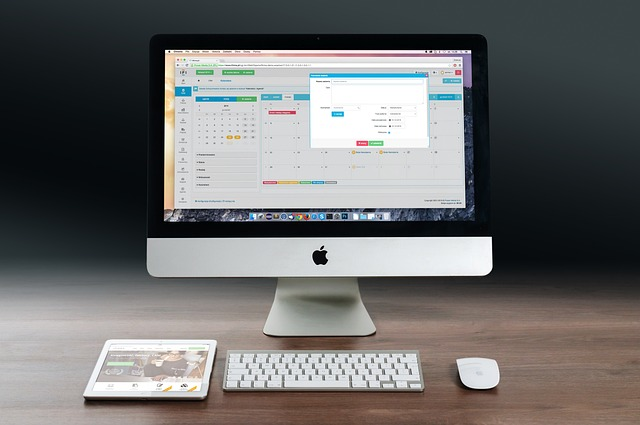Which of the Following is a Best Practice of Social Media Safety?

Are you aware of the significant importance of securing your social media accounts? In today’s digital age, social media platforms have become an integral part of our daily lives, making it crucial to ensure that our personal information remains inaccessible to malicious actors. But how can we effectively safeguard our online presence? One best practice is to use strong passwords combined with two-factor authentication (2FA). This simple yet powerful combination adds an extra layer of security to your accounts, making it considerably harder for hackers to gain unauthorized access.
Practice 1: Using Strong Passwords and Two-Factor Authentication on Major Social Media Platforms
Creating strong passwords is a foundational step in protecting your social media accounts. A strong password typically consists of a mix of upper and lower case letters, numbers, and special characters, making it difficult for cybercriminals to crack. To reinforce the strength further, users can also add invisible characters in the password. These appear unseen to human eyes, but the algorithms of social media can read them.

However, strong passwords alone might not be enough. Integrating two-factor authentication into your security strategy significantly enhances your defense. 2FA requires you to provide two forms of identification before granting access: something you know (your password) and something you have (like a mobile device). Major social media platforms such as Facebook and Twitter offer 2FA options, providing an additional safeguard against unauthorized access and online scams.
By implementing strong passwords and enabling two-factor authentication, you take a proactive approach in protecting your online identity. These measures are essential not only for personal accounts but also for businesses managing multiple social media accounts. In a digital landscape where online scams and identity theft are rampant, it’s worth exercising caution to ensure that your private information remains inaccessible to cyber threats.
Practice 2: Managing Security and Privacy Settings
Another essential practice for social media safety is effectively managing your security and privacy settings. Each social media platform offers a variety of tools and options to help you control who can see your posts, contact you, and access your information. Regularly reviewing and updating these settings can significantly reduce the risk of your account being hacked or your personal data being misused.

For example, Facebook allows users to customize their privacy options, deciding who can view their profile information, posts, and friend lists. Twitter provides similar controls, enabling you to protect your tweets and manage who can follow or interact with you.
By taking the time to understand and configure these settings, you can better protect your digital footprint and ensure that your personal information is only accessible to trusted contacts.
In addition to adjusting privacy settings, it’s also crucial to be cautious about the information you post online. Avoid sharing sensitive details such as your home address, phone number, or financial information.

This practice not only helps in safeguarding your identity but also in preventing phishing messages and other online scams. Following expert advice and staying informed about the latest security features offered by popular online services can further enhance your social media safety.
Practice 3: Regularly Updating Your Social Media Content Calendar
Are you utilizing a social media content calendar to manage your posts effectively? For most social media accounts, planning and scheduling content in advance is essential. This not only helps in maintaining consistency but also ensures that the information shared is well-thought-out and relevant.

By following guidance from industry experts, you can create a content calendar that includes status updates, useful materials, and engagement strategies tailored to your audience.
A well-maintained social media content calendar allows you to research and prepare your posts, reducing the chances of sharing false or outdated information. It also provides an opportunity to regularly review and update your content, ensuring that your social media sites remain dynamic and engaging. This proactive approach helps in building a trusted online presence, attracting more followers and enhancing your interaction with them. By staying organized and thoughtful in your posting, you create a safer and more professional digital environment.
Practice 4: Educating Yourself and Your Family About Online Safety
Keeping children safe online is a significant concern for many parents and guardians. Social media can be a dangerous place if not navigated with caution. It is crucial to educate yourself and your family about the potential risks and how to avoid them.

Start by teaching your children the importance of not sharing personal information, such as their full name, address, or school, on social media platforms.
You should also guide them on how to identify and avoid interacting with suspicious links and unknown contacts. Encourage them to only accept friend requests from people they know in real life and to report any inappropriate behavior or content they come across.
Regular discussions about online safety can help children understand the importance of maintaining privacy and security on social media sites, much like how Microsoft Fabric consulting helps businesses safeguard their data and ensure secure cloud integration.

Additionally, make use of parental control tools and privacy settings offered by various social media platforms to monitor and restrict your children’s online activities using an internet filter. This ensures that their interaction with the digital world is safe and age-appropriate.
Practice 5: Verifying Information Before Sharing on Social Media Accounts
In the age of instant information, it’s easy to fall into the trap of sharing content without verifying its authenticity. However, this can lead to the spread of misinformation and harm your credibility. Before posting or sharing any information, take the time to verify it through reliable sources.
This practice is especially important when dealing with news, status updates, or links to other websites. Make sure that the information is accurate and comes from a reputable source.

Avoid sharing content from websites that are known to spread false information or that lack credibility. This not only helps in maintaining the integrity of your social media accounts but also ensures that your followers receive accurate and trustworthy information.
Practice 6: Avoid Sharing Publicly Available Information
Have you ever considered the risks of sharing too much publicly available information online? While it might seem harmless to post your location, daily activities, or personal milestones, this information can be exploited by malicious actors. Social media platforms can inadvertently become a treasure trove of data for identity thieves and scammers.
To mitigate these risks, limit the amount of personal information you share on your social media pages. Refrain from posting details like your home address, phone number, or specific plans. Encourage your friends and colleagues to do the same to maintain a secure online environment.

When sharing photos or updates, consider the potential implications and who might have access to this information. Using privacy settings to control who can view your posts and ensuring that your content is only visible to trusted contacts can significantly reduce the chances of your information being misused.
Practice 7: Be Cautious with Links and Downloads from Social Media Platforms
The internet is full of valuable resources, but not every link or download is safe. Cybercriminals often use malicious links to distribute malware or phishing attacks. When you come across a link in a message or post, be cautious before clicking.

Even if the link appears to come from a trusted person or website, it’s wise to verify its legitimacy.
One effective tip is to hover over the link to see the actual URL before clicking. This can help you identify if the link directs to a suspicious or unfamiliar website. Additionally, refrain from downloading attachments or software from unverified sources.
Always ensure that your device has up-to-date antivirus software to provide an extra layer of protection against potential threats. By following these precautions, you can protect your social media accounts and personal data from harmful cyber attacks.
Practice 8: Regularly Review and Update Security Settings
Social media platforms frequently update their security features to better protect users. However, not everyone takes advantage of these updates. To ensure your accounts remain secure, regularly review and update your security settings.
This includes revisiting who has access to your information, which apps are connected to your account, and adjusting privacy settings as needed.
Most social media platforms provide detailed guides and tips on how to enhance your account security. Take the time to explore these resources and implement recommended changes.

For example, make sure that your friends can only view your posts, and not everyone on the internet. Also, review the permissions you’ve granted to third-party apps and revoke access for any that you no longer use or trust.
Which of the following is a best practice of social media safety?
A best practice of social media safety is using strong passwords combined with two-factor authentication to protect your accounts from unauthorized access and enhance overall security.
Key Takeaways on which of the following is a best practice of social media safety
- Use strong passwords and enable two-factor authentication for enhanced security.
- Regularly update and review privacy settings to control access to your information.
- Verify information before sharing to prevent the spread of false date to sign up.
- Be cautious with links and downloads to avoid malware and phishing attacks.
Conclusion
By implementing these social media safety practices, you can protect your personal information and maintain a secure online presence. Good luck!



